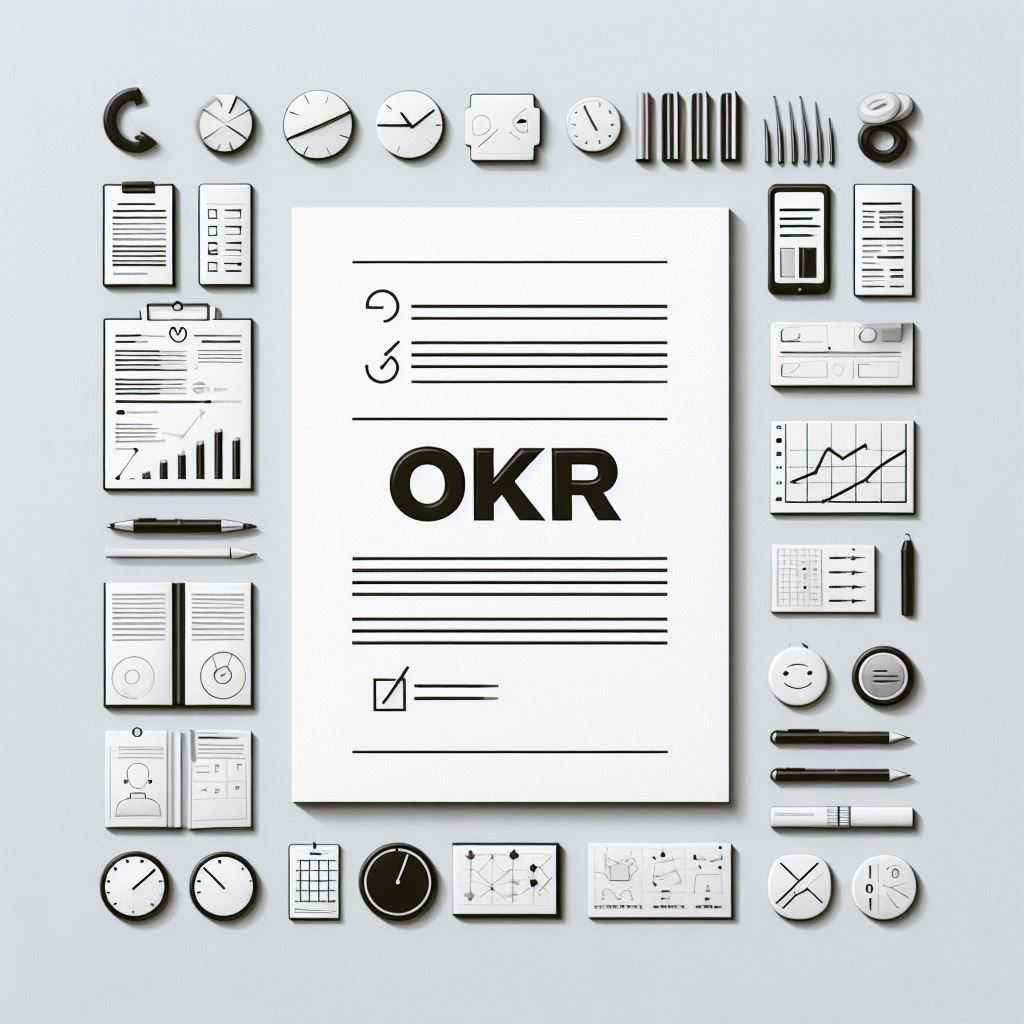In the dynamic landscape of contemporary business, achieving organizational success necessitates the adoption of strategic frameworks that transcend conventional paradigms. One such method that has gained prominence is the Objectives and Key Results (OKR) methodology. This innovative approach serves as a beacon for enterprises striving to navigate the complexities of goal-setting and performance evaluation with unparalleled precision and effectiveness.
The Foundation: Understanding Objectives and Key Results
At its core, the OKR methodology is a goal-setting system that orchestrates clarity, alignment, and measurable outcomes within an organization. By delineating a hierarchy of Objectives and the corresponding Key Results, this methodology instills a sense of direction and purpose at both macro and micro levels.
Decoding Objectives
Objectives serve as the North Star guiding an organization toward its overarching mission. These are qualitative, inspirational statements that articulate the desired outcomes without delving into the minutiae of execution. For instance, an Objective could be to "Revolutionize Customer Engagement."
Unraveling Key Results
In the tapestry of OKRs, Key Results are the quantifiable and tangible metrics that signify progress toward achieving the Objectives. Unlike Objectives, Key Results are specific, measurable, and time-bound, providing a clear yardstick for success. An example of a Key Result for the aforementioned Objective might be to "Increase Customer Satisfaction Scores by 15% within the next quarter."
The Symphony of Implementation
Implementing the OKR methodology is a meticulous orchestration that requires strategic finesse and commitment from all organizational echelons. Let's delve into the intricacies of each component to comprehend how they harmonize in fostering a culture of continuous improvement.
1. Alignment and Cascading
The bedrock of OKRs lies in their seamless alignment throughout the organizational hierarchy. Starting from the leadership, each level of the organization crafts Objectives that cascade down, ensuring a unified sense of purpose. This alignment cultivates a shared vision and synchronicity of efforts across departments.
2. Rigorous Measurement
Precision is the watchword when it comes to measuring Key Results. Utilizing specific metrics, organizations can objectively evaluate progress. For instance, in a technology-driven Objective like "Enhance Cybersecurity Infrastructure," Key Results may involve reducing security vulnerabilities or increasing incident response efficiency.
3. Regular Check-ins and Iteration
The agility of the OKR methodology is accentuated by its iterative nature. Frequent check-ins, often in the form of weekly or bi-weekly reviews, enable teams to recalibrate strategies, address roadblocks, and adapt to evolving circumstances. This iterative process fosters a culture of continuous learning and improvement.
Navigating Challenges: The Resilience of OKRs
No organizational methodology is without its challenges, and OKRs are no exception. However, their innate resilience lies in the ability to transform challenges into opportunities for growth. Let's explore some common hurdles and the strategies to surmount them.
1. Ambiguity in Objectives
Crafting clear and concise Objectives is an art that requires adept communication skills. Ambiguity can derail the effectiveness of OKRs. To mitigate this, organizations should invest time in articulating Objectives that resonate with the workforce and provide unambiguous direction.
2. Overemphasis on Key Results
While quantifiable metrics are integral, an overemphasis on Key Results at the expense of the broader vision can lead to tunnel vision. Striking a balance between qualitative Objectives and quantitative Key Results ensures a holistic approach to organizational success.
3. Resistance to Change
Introducing a novel methodology often encounters resistance. The key lies in effective change management. Leaders should communicate the benefits of OKRs transparently, emphasizing how it aligns with the organization's mission and empowers employees to contribute meaningfully.
OKRs in Action: Case Studies
To elucidate the tangible impact of the OKR methodology, let's explore a couple of real-world case studies where organizations have leveraged this framework to drive innovation, enhance performance, and achieve unprecedented success.
Case Study 1: Google's OKR Legacy
Google, synonymous with innovation, attributes much of its success to the disciplined implementation of OKRs. From the inception of the company, Google's founders embraced OKRs to channel efforts and align teams. The result? A trailblazing journey marked by groundbreaking products and sustained growth.
Case Study 2: Spotify's Harmonious OKR Journey
In the competitive realm of the music streaming industry, Spotify orchestrated a symphony of success through OKRs. By aligning Objectives with customer-centric goals and utilizing Key Results to measure user engagement, Spotify exemplifies how OKRs can be tailored to diverse industries.
The Future Horizon: Evolving with OKRs
As organizations traverse the dynamic landscape of business, the adaptability of methodologies becomes paramount. The OKR methodology, with its intrinsic flexibility, positions itself as a timeless ally in the pursuit of organizational excellence.
Continuous Evolution
OKRs are not static; they evolve with the organization. Regular reassessment of Objectives and Key Results in tandem with shifting priorities and market dynamics ensures that the methodology remains a relevant and potent force.
Integration with Emerging Technologies
The advent of artificial intelligence (AI) and data analytics presents new avenues for augmenting OKRs. Leveraging these technologies can enhance the precision of measurements and predictive capabilities, ushering in a new era of strategic goal-setting.
Conclusion: Charting a Course for Success with OKRs
In the grand tapestry of organizational methodologies, the Objectives and Key Results (OKR) methodology stands as a testament to the power of clarity, alignment, and measurable outcomes. By meticulously crafting Objectives that inspire and Key Results that quantify progress, organizations can embark on a journey of continuous improvement, innovation, and sustained success. As we navigate the future, the resilience and adaptability of OKRs beckon organizations to chart a course that transcends the ordinary and propels them towards unparalleled excellence.
Further Reading
The Role of Individual Targets in OKR: A Deep Dive
The Significance of Confidence Levels in OKR Management
Adapting the OKR Framework to Suit Your Organization's Needs
Ready to find out more?
